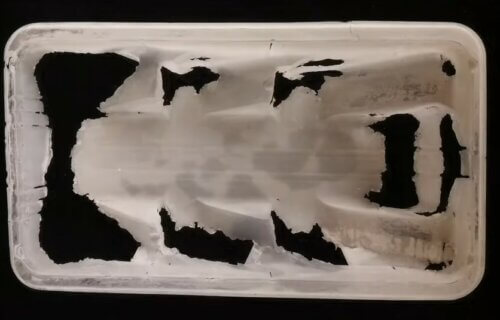
AUSTIN, Texas — A “Pac-man”-like protein that eats plastic could open the door to eliminating billions of tons of landfill waste. Researchers at The University of Texas at Austin developed this special enzyme to destroy PET (polyethylene terephthalate) — a common substance manufacturers use in food and drink packaging, textiles, and fibers.
Its creation offers hope of helping solve global pollution by enabling a complete recycling of plastic waste. Major industries would be able to recover and reuse products at the molecular level.
“The possibilities are endless across industries to leverage this leading-edge recycling process,” says Professor Hal Alper in a university release.
“Beyond the obvious waste management industry, this also provides corporations from every sector the opportunity to take a lead in recycling their products. Through these more sustainable enzyme approaches, we can begin to envision a true circular plastics economy.”
PET makes up 12 percent of all global waste. Like all plastics, it’s made up of long string-like molecules. The enzyme reduces them into smaller parts before chemical reassembly. In some cases, the plastics take just 24 to 48 hours to fully break down. In the oceans, these products can survive for centuries.
AI finds the perfect plastic eater
Artificial intelligence (AI), or machine learning, generated novel mutations to a natural enzyme called PETase that allows bacteria to degrade PET. The computer neural network identified those that would be most effective at less than 122 degrees Fahrenheit, making it both portable and affordable.
Prof. Alper and colleagues analyzed dozens of discarded plastic items including containers, water bottles, and polyester fibers and fabrics — all made using PET. Experiments proved the effectiveness of the enzyme named FAST-PETase (functional, active, stable, and tolerant PETase).
“This work really demonstrates the power of bringing together different disciplines, from synthetic biology to chemical engineering to artificial intelligence,” says co-author Prof. Andrew Ellington.
In 2020, the world produced 367 million tons of plastic. Less than ten percent ended up being recycled. Plastic bottles and wrappers regularly litter beaches and studies show that plastic waste is ending up in the bodies of fish and other aquatic life such as turtles.
After sending this material to landfills, burning is the second most common method of disposal for plastic. However, it’s costly and also spews noxious gas into the air. Other alternative industrial processes are just as energy-intensive, but biological solutions require much less effort.
Study authors note that they are scaling up production of the enzyme to prepare for industrial and environmental applications. The Texas team has filed a patent and is eying several different uses, including cleaning up landfills and making high waste-producing industries more eco-friendly.
“When considering environmental cleanup applications, you need an enzyme that can work in the environment at ambient temperature. This requirement is where our tech has a huge advantage in the future,” Prof. Alper concludes.
The findings are published in the journal Nature.
South West News Service writer Mark Waghorn contributed to this report.
